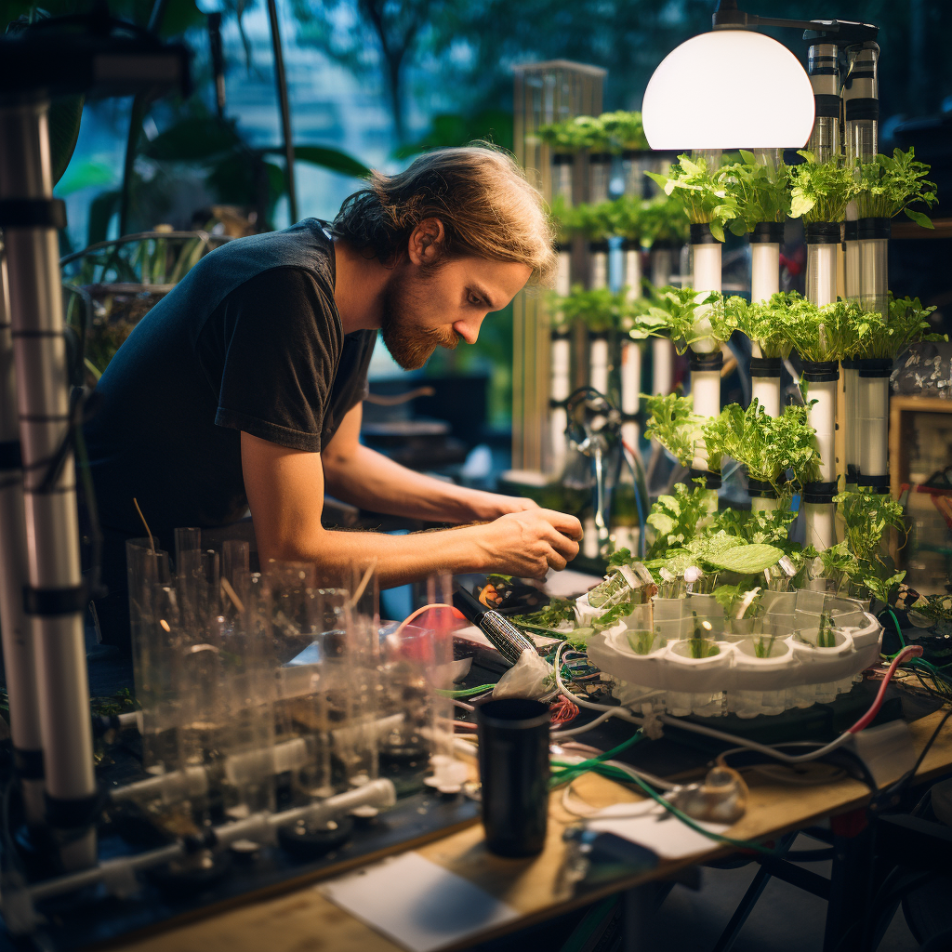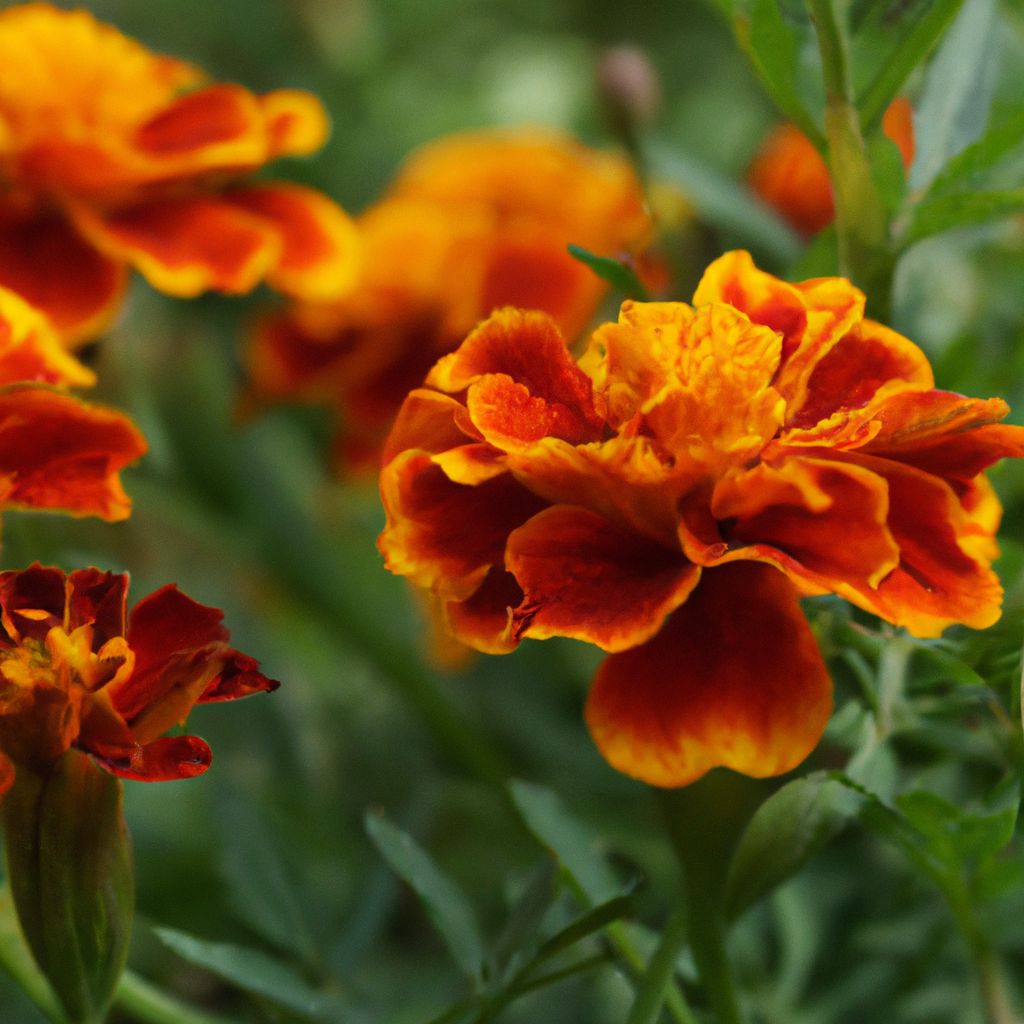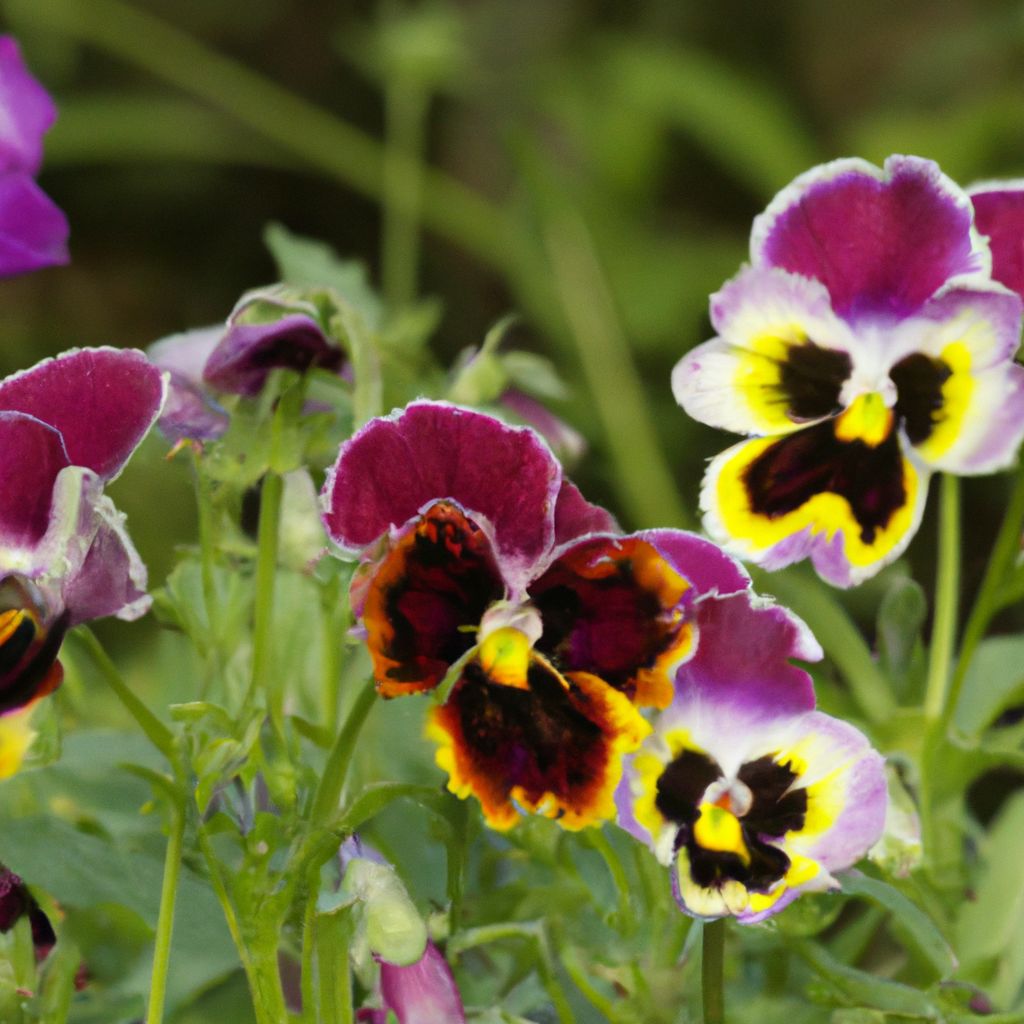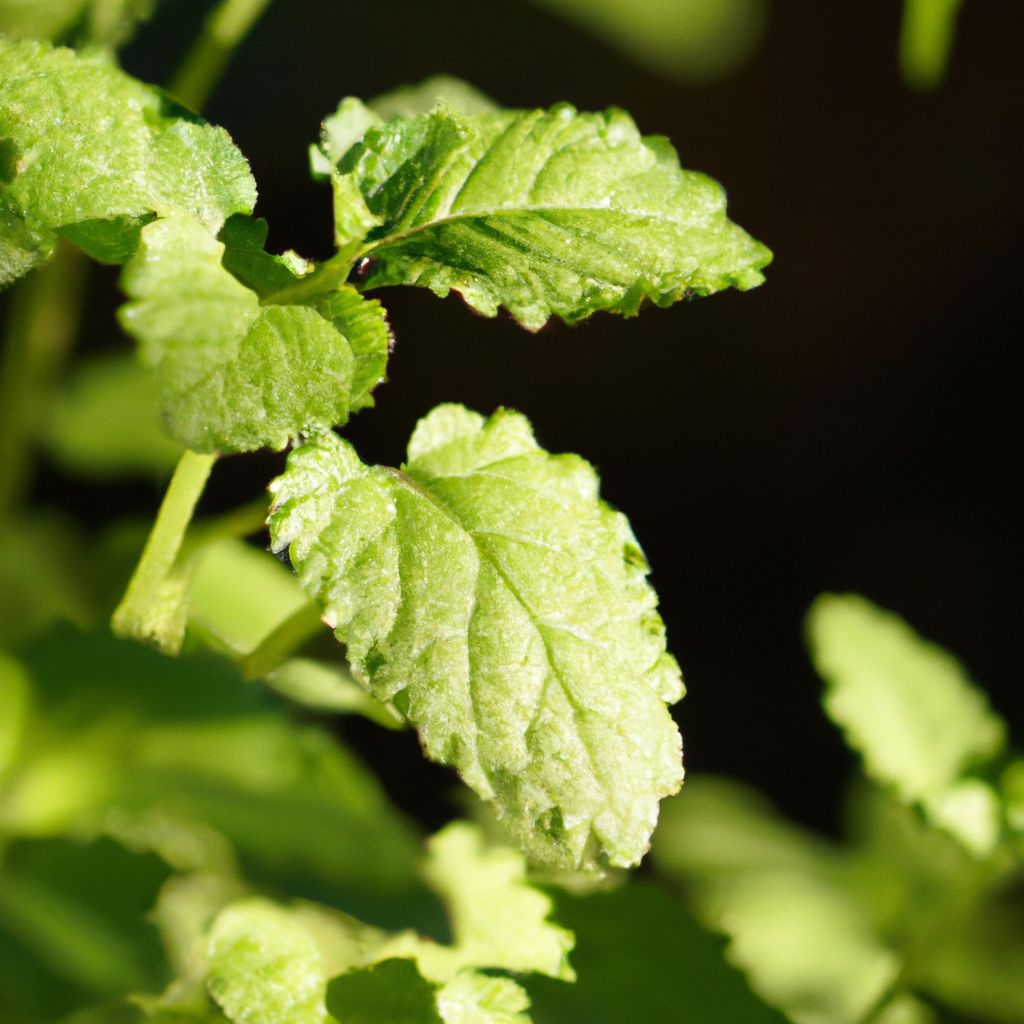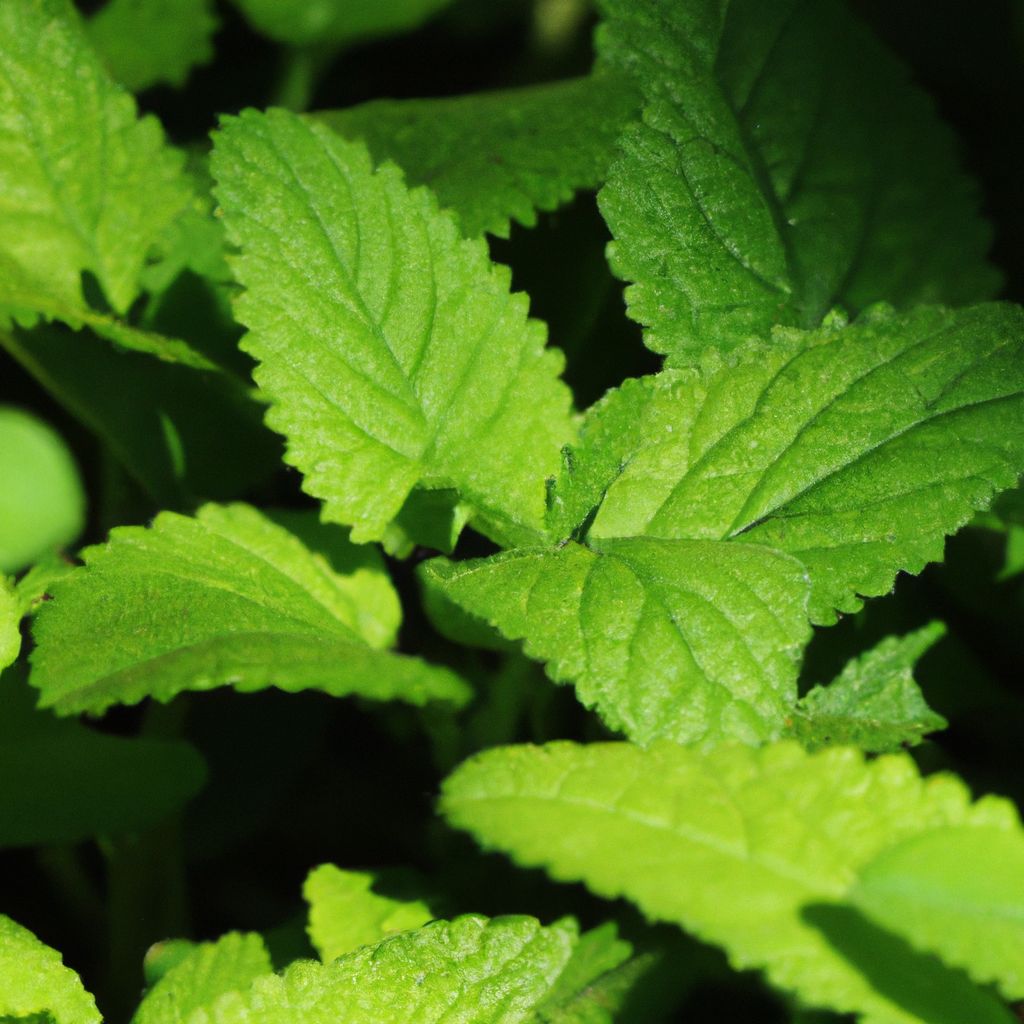Aeroponic gardening is an innovative cultivation method that involves growing plants without soil. This cutting-edge gardening technique suspends plant roots in air and mists them with a nutrient-rich solution. It can look intimidating to get started, but with our guide on how to create an aeroponic garden, you’ll be up and running before you know it.
Compared to traditional gardening, aeroponic gardening offers numerous advantages like faster growth rates, higher yields, and enhanced water efficiency. By creating the ideal environment, plants can thrive and absorb nutrients efficiently.
If you want to try your hand at futuristic gardening, read on as we explore how to set up your own aeroponic system and care for your plants.
What is Aeroponic Gardening and How Does it Work?
Aeroponic gardening is a hydroponic technique where plant roots are suspended mid-air and misted with a nutrient solution. With ample oxygen and immediate access to nutrients, plants can experience accelerated growth.
The mist envelops the bare roots, providing moisture and nutrients. Just like hydroponics, aeroponics eliminates the need for soil. However, aeroponics takes it a step further by maximizing air exposure.
An aeroponic system requires components like:
- Reservoir – Holds the nutrient solution
- Pump – Circulates the nutrient solution
- Timer – Controls misting schedule
- Misting nozzles – Create a fine mist for the roots
The nutrient solution in the reservoir is pumped through the nozzles, creating a fine mist. This provides the roots with optimal moisture and nutrients for rapid growth.

How Aeroponics Promotes Faster Growth
There are a few key reasons why plants thrive in aeroponic systems:
- Maximized oxygen – With roots suspended in air, they receive ample oxygen which is essential for growth. This super-oxygenated environment fuels faster growth.
- Immediate nutrient access – The mist delivers nutrients directly to the roots without having to travel through soil or medium. This enhances nutrient absorption.
- Lower disease risk – With no soil, the risk of soil-borne diseases is eliminated. Healthier roots equal healthier plants.
- Humidity control – The enclosed system allows precise control over humidity levels, optimizing growth conditions.
Through these optimized growth factors, aeroponics enables accelerated plant growth and higher yields compared to soil gardening.
The Evolution of Aeroponics
While aeroponics seems futuristic, its origins date back to the 1940s when researchers experimented with air culture growing methods. However, the term “aeroponics” wasn’t coined until 1983 by Dr. Richard Stoner who built the first high-pressure aeroponic apparatus.
From NASA research on how to create an aeroponic garden, to commercial systems, aeroponic technology has come a long way. Today, it is heralded as the next generation of soilless gardening.
As more gardeners adopt aeroponic systems, we will continue to see evolutions in equipment, techniques and plant varieties optimized for these high-performance gardens.
Setting Up Your Own Aeroponic System
To create your own aeroponic garden, you’ll need to gather supplies like containers, pumps and misters.
Start by choosing plants suited for aeroponic cultivation. Leafy greens, herbs and some flowering plants are great options.
Next, set up the reservoir and place the pump inside. Attach misting nozzles and connect to a timer to control the misting schedule.
Insert seedlings or cuttings into slots or net pots, suspending the bare roots in the air. Ensure they are positioned to receive adequate mist.
Now it’s time to switch on the pump and observe the misting process. Make any adjustments to ensure smooth functioning.
With the right setup, you’ll be on your way to growing plants without soil!
Aeroponic System Components
Here are the key components you’ll need to set up an aeroponic system:
Reservoir
This container holds the nutrient-rich water solution that will be misted onto the plant roots. Consider capacity, material, opacity and dimensions.
- Capacity – Size it based on your system and number of plants. From 5 gallons to over 100 gallons.
- Material – Durable plastics like polyethylene or fiberglass work well.
- Opacity – Opaque reservoirs prevent light entry and algae growth.
- Dimensions – Select a reservoir shape to suit your space constraints.
Water Pump
This will pump the nutrient solution from the reservoir to the misting nozzles. Consider power and flow rate based on your system size.
- Power – Measured in watts. More powerful for bigger systems and reservoirs.
- Flow rate – Measured in GPH or gallons per hour. Select adequate flow for your system.
Misting Nozzles
Specialized nozzles that create a fine mist to deliver nutrients to the roots.
- Spacing – Space evenly to mist all plants adequately.
- Position – Angle for optimal root coverage.
- Size – Larger droplets may pool rather than mist. Select nozzles that produce a fine mist.
Net Pots/Baskets
Suspends plant roots and provides support. Various materials like plastic, mesh or cloth can be used.
Timer
Automates the misting schedule by turning the pump on and off. Can be digital or analog.
Growing Medium
Optional inert mediums like clay pebbles can provide root support and stability.
Nutrient Solution
Contains essential minerals for healthy growth. Select specialized hydroponic nutrients tailored for aeroponics.
pH Testing Kit
Essential for monitoring and adjusting pH levels in the nutrient solution.

Setting Up Step-by-Step
Follow these steps on how to create an aeroponic garden:
- Choose plants suitable for aeroponic cultivation.
- Select a reservoir based on size requirements. Opaque plastic works well.
- Install water pump in reservoir based on system specs.
- Attach misting nozzles evenly spaced above where roots will be suspended.
- Connect nozzles to pump via irrigation lines.
- Place net pots or baskets where you want plants positioned.
- Insert plants/cuttings securing roots suspended below misters.
- Add growing medium like clay pebbles if desired for support.
- Fill reservoir with nutrient solution and check pH levels.
- Set timer to control misting schedule.
- Turn pump on and inspect misting setup.
- Make any adjustments to optimize positioning.
- Monitor root development and plant health.
- Enjoy your soilless aeroponic garden!
Selecting the Right Plants for Your Aeroponic Garden
When selecting plants, opt for varieties that thrive in high humidity and hydroponic environments. Here are some top options:
Leafy Greens
- Lettuce – All varieties do well including romaine, leaf and bibb.
- Spinach – Thrives with constant moisture and nutrients.
- Kale – Fast-growing and highly nutritious.
- Arugula – Tolerates varying humidity levels.
- Swiss Chard – Versatile for salads and cooking.
Lettuces and greens are excellent starter plants for beginner aeroponic gardens. They grow rapidly and can be continually harvested.
Herbs
- Basil – Grows vigorously with ample moisture and warmth.
- Mint – Thrives in humid conditions with adequate nutrients.
- Oregano – Appreciates constant moisture levels.
- Rosemary – Can withstand slightly drier conditions.
- Cilantro – Grows quickly and prolifically in aeroponic settings.
Herbs are a great addition to culinary gardens. Many mint varieties and basils grow exceptionally well aeroponically.
Vegetables
- Tomatoes – Among the most popular plants. Cherry tomatoes work well.
- Peppers – Prefer warm, humid environments achieved in aeroponics.
- Beans – Pole bean varieties grow vertically allowing tight spacing.
- Cucumbers – Require consistent moisture levels provided aeroponically.
- Zucchini – Compact bush varieties are best suited for small spaces.
Fruiting vegetables can also be grown aeroponically. Look for compact, prolific varieties suitable for containers.
Fruits
- Strawberries – Day-neutral varieties can produce fruit year-round.
- Melons – Grow well but require ample vertical space.
- Citrus – Dwarf varieties are best-suited for indoor systems.
- Blueberries – Require acidic conditions around pH 4.5-5.5
Select petite fruiting varieties. Provide proper nutrients and conditions for each specific fruit plant.
Flowers
- Orchids – Require humid, warm, well-drained conditions.
- Anthuriums – Prefer partially shaded environments and moist roots.
- Bromeliads – Adapted to thrive in humid tropical settings.
- Gerbera Daisies – Grow best in consistently moist soils making aeroponics suitable.
Many tropical flower varieties accustomed to humidity transition well to enclosed aeroponic environments.
Caring for Your Aeroponic Plants
To nourish your plants, monitor these key elements:
Nutrients
Use hydroponic nutrient solutions to provide balanced nutrition. Adjust levels as needed based on:
- Plant variety – Formulas catered to leafy greens, fruiting plants, etc.
- Growth stage – Seedlings need lower concentrations than mature plants.
- Observed deficiencies – Increase nutrients showing deficiencies.
- Water alkalinity – Can impact nutrient availability.
Test and modify nutrient levels regularly for a tailored nutrient diet.
pH
Maintain an optimal pH of 5.5-6.5 for proper absorption. Monitor pH by:
- Testing daily when first establishing the system.
- Testing weekly for established systems.
- Using digital or liquid test kits for accuracy.
Adjust pH by adding pH up and down solutions as needed.
Aeration
Ensure good airflow and oxygenation with:
- Air pumps and air stones – Bubble air through solution.
- Vertical towers – Allow air movement across roots.
- Fans – Can improve air circulation.
Proper aeration fuels growth and prevents diseases.
Watering
Avoid overwatering and wetting leaves to discourage diseases.
- Use short misting intervals multiple times per day.
- Observe mist coverage and adjust nozzles as needed.
- Time pump cycles using a timer and adjust as needed.
- Install overflow drainage to prevent waterlogging.
Diseases
Inspect regularly and isolate affected plants to prevent spreading.
- Look for wilting, spots, discoloration or rot.
- Sterilize components and use fresh nutrient solution.
- Remove and discard diseased plants.
- Increase air circulation.
Catch issues early before infestations occur. Have a plan to manage diseases.
Lighting
Ensure plants receive adequate sunlight or grow lights.
- Natural light works well for indoor systems placed near windows.
- Full spectrum LED grow lights can provide supplemental lighting.
- Light duration depends on plant variety. Fruiting plants need 12-16 hours.
Proper lighting fuels growth and influences fruiting and flowering.

Helpful Tips on How to Create an Aeroponic Garden
Here are some valuable tips to help your aeroponic garden thrive:
Mist Nozzles
- Position misters to envelop all roots evenly in nutrient mist. Suspending them above and angled works well.
- Check nozzle placement frequently as roots grow longer to ensure adequate misting.
- Select nozzles that create a fine mist spray for maximum surface contact. Avoid large droplets that pool rather than mist.
Reservoir
- Use opaque reservoirs to block exterior light which can promote algae growth.
- Ensure the reservoir is large enough to hold an adequate volume of nutrient solution for your system size and plants.
- Install caps on fill ports and places to prevent contamination and evaporation.
Nutrient Solution
- Check and adjust nutrient levels regularly based on plant needs. Keep records to optimize your nutrient formula.
- Agitate fertilizer mixes thoroughly so nutrients dissolve fully before adding to the main reservoir.
- Avoid using turbulent water pumps that can strip out CO2. Use air pumps for aeration.
pH Balance
- Test and adjust pH daily when first establishing plants in the system.
- For established systems, test pH weekly. More frequently if issues arise.
- Rinse pH probes thoroughly between tests for accuracy. Calibrate meters routinely.
- Flush systems with fresh water if pH fluctuates rapidly indicating a buildup of dissolved salts.
Plumbing
- Use opaque tubing to help block light and reduce algae.
- Secure tubing properly to prevent sagging and kinks which can disrupt flow.
- Check plumbing routinely for leaks which can cause pressure issues and nutrient imbalances.
- Install a filter on pump intake lines to prevent debris clogging up misters.
Sanitation
- Sterilize the system between grow cycles to prevent transfer of diseases.
- Avoid introducing pests and pathogens by using sterile seed starter cubes.
- Keep pH meters and testing tools clean and avoid cross-contamination between tests.
Proper sanitation practices are essential for healthy plants.
With the right care and maintenance, your aeroponic garden will reward you with rapid, bountiful harvests. Explore the innovative possibilities of soilless gardening with aeroponics!
Comparing Aeroponics vs Hydroponics
While aeroponics and hydroponics are both soilless gardening methods, there are some key differences between the two:
Growing Medium
- Aeroponics – No growing medium is used. Roots are suspended in air and misted with nutrients.
- Hydroponics – Plants are supported using substrate like rockwool, perlite, coco coir, etc. Roots sit in the nutrient solution.
Water Usage
- Aeroponics – Uses up to 95% less water since roots are misted versus submerged.
- Hydroponics – Roots sit in the nutrient solution so more water is required. However, hydroponics still uses less water than soil gardening.
Nutrient Absorption
- Aeroponics – Nutrients are rapidly absorbed through the fine mist on the exposed roots.
- Hydroponics – Nutrients must diffuse into the substrate to reach the roots before being absorbed.
Oxygenation
- Aeroponics – Roots suspended in air get 100% oxygenation.
- Hydroponics – Dissolved oxygen must be introduced via air pumps and stones. But levels are lower than aeroponics.
Growth Rate
- Aeroponics – The highly oxygenated environment promotes faster growth.
- Hydroponics – Plants still grow faster than soil but typically slower than aeroponics.

Both systems have pros and cons suited for different gardening needs. Aeroponics offers maximum growth potential for compact, high-yield systems. But hydroponics may be simpler for hobby growers.
Aeroponic Gardening FAQs
What are the main components needed for an aeroponic system?
The key components are: reservoir, water pump, timer, misting nozzles, tubing, net pots and a nutrient solution. Optional extras include growing medium, air pumps and pH meters.
What maintenance does an aeroponic system require?
Routine maintenance involves: checking hardware for leaks/clogs, monitoring nutrient levels and pH, adjusting misters as needed, cleaning filters and sterilizing between plant cycles.
What nutrient solution is ideal for aeroponic systems?
Specialized hydroponic plant nutrients designed for aeroponic cultivation are recommended. General hydroponic formulations also work well.
How often should the nutrient solution be replaced?
Depending on system size, plants grown and environment, solutions typically last 2-8 weeks before needing replacement. Test regularly and replace sooner if nutrient depletion is observed.
What causes root rot in aeroponic systems?
Excess moisture from overmisting, low oxygen levels and pathogens/fungus are common causes of root rot. Ensure adequate aeration and ventilation. Avoid oversaturating roots.
Is aeroponic gardening difficult for beginners?
Aeroponic systems require some hardware and maintenance which can seem daunting. Start with a small setup using hardy plants. Learn as you go to gain experience before expanding your system.
What pH range should the nutrient solution be?
For most plants, maintaining a pH between 5.5 to 6.5 provides optimal nutrient availability in aeroponic systems. Test and adjust pH accordingly.
Do aeroponic systems require grow lights?
Natural lighting near windows may suffice for small setups. For bigger systems, high-output LED grow lights are recommended to provide full spectrum light to fuel plant growth.
Are aeroponic systems expensive to operate?
While initial setup costs can be steep, ongoing costs are low since it uses minimal water and nutrients. Energy costs for pumps/lights are the main operational expense.

Final Thoughts on Aeroponic Gardening
Aeroponic gardening offers an innovative method for growing plants in a futuristic, soilless environment. By precisely misting roots suspended in air, plants thrive with maximum access to oxygen, nutrients and moisture.
While aeroponic systems require some equipment and maintenance, the growth potential is unmatched. Plants experience rapid growth rates and substantial yields in these high-performance gardens.
For urban gardening or any space-limited growing, aeroponics provides a compact, productive solution. The enclosed system allows year-round cultivation unaffected by climate.
As hydroponic techniques continue to advance, aeroponics represents the next generation in soilless gardening. With some planning and experimentation, both hobby and commercial growers can leverage these systems to maximize productivity.
The world of futuristic gardening awaits. Embrace the possibilities of aeroponics to grow your green thumb to new heights!











































